Text
Letters and Revolutions (Diario de uma busca), Flávia Castro, 2011
Today, I would like to talk about a movie that I discovered by chance some time ago named Letters and Revolutions.
The synopsis is about a man named Celso Castro, a journalist and former Trotskyite activist and his tumultuous life. In October, 4th, 1984, he was found dead due to gunshot in the home of a man suspected of being part of a group of ex-Nazis, in Porto Alegre. Suicide, assassination, accident? This is the starting point for his daughter Flávia who will try to reconstruct the story of her father's life and death, twenty five years later.

This documentary released in 2010 by the filmmaker Flávia Castro focuses on both a family memory and a national memory for the political history of Brazil. In 2002, her half-sister Maria Castro wanted to know more about her father's life, so she decided to film the family reunion with her grandmother Zilda Gay and his brother Joca in Brazil in order to know more about the life of Celso. Filmed interviews are an important device to access precious memories and to gather
information. The fact that the filmmaker includes herself in the frame made me think about the genre of “cinema vérité” whose aim is to bring life and truth to the surface. Interviews immerse us in an intimacy where his loved ones confide and explain the pain of
this atypical lifestyle, of living in a family whose political commitment is in the foreground. She leaves in the editing a passage where her brother gives his opinion on her approach and the way he does not know how to place himself in the documentary, that creates a proximity and transparency with spectators.
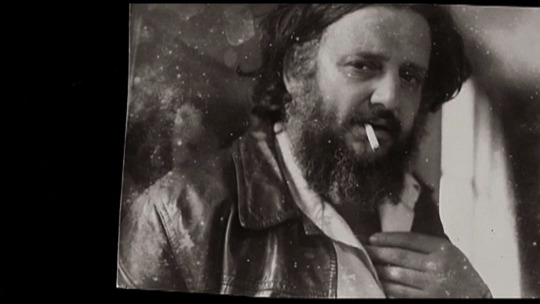
Celso Castro.

Flávia's mother
Familial pictures and videos are the main archives used to get to know the family but there are also many official documents like administrative papers or diverse police documents. Many witnesses and friends of Celso are in the movie to contribute to providing their
testimony. The letters written by Celso years ago are also read by them and the intimate emotions of each protagonist and their feelings due to the discovery of those letters many
years later are very moving and painful. The movie won the Best Documentary Award at the Latin American Film Festival in Biarritz
and at the International Film Festival in Rio. This film was also awarded Best Film at the Punta del Este International Film Festival and the Gramado Film Festival. The International Film Press Federation (FIPRESCI) awarded him the Best Film Award at Cannes in 2010.
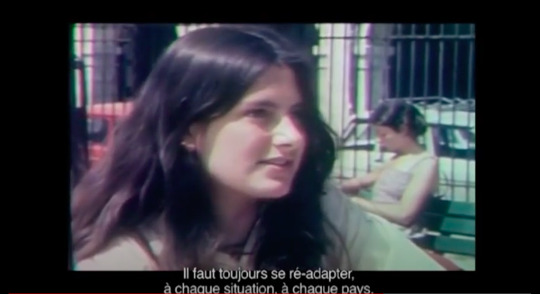
Flávia Castro.

Flávia Castro (on the left) and her siblings.


Between the police investigation and the personal diary, Letters and Revolutions is a journey through time, where a family's destiny merges with the dreams and hopes of an entire generation of activists.
Bianca
0 notes
Text
“Averroès et Rosa Parks” : a proposition for filming psychiatry (Nicolas Phillibert, 2024)
“Averroès et Rosa Parks” is a documentary released on March 20, 2024. It focuses on the residents of the psychiatric unity of the Esquirol hospital in Val-de-Marne. Through interviews with 10 patients and psychiatrists, Nicolas Philibert takes us into the daily lives of these people, their thoughts, anxieties, and feelings about life in a psychiatric institution.

The director of “Averroès et Rosa Parks” is Nicolas Philibert. Born in Nancy in 1951, he studied philosophy before becoming an assistant director. He soon began co-directing feature-length documentaries. The first of these was “La Voix de son maître” (1978) which interviewed major industrial CEOs and highlighted power dynamics in the world of finance. He directed films such as “La Ville Louvre” (1990), “Le Pays des sourds” (1992), “Un animal, des animaux” (1995), “Être et avoir” (2001), “Nénette” (2010), “La Maison de la radio” (2013). Films that take the time to observe and bring to life the subjects they deal with, the better to show them through the camera. He has won different prizes, has received 120 tributes and retrospectives all over the world and has become a reference in the documentary.
With “Averroès et Rosa Parks”, Nicolas Phillibert is continuing a triptych about psychiatric institutions and their residents. In 2023, “Sur l'Adamant” was released in cinemas, presenting a day center for adults suffering from mental disorders, located on a building floating on the Seine. Also attached to the Saint-Maurice hospitals, some of Adamant's patients are also featured in “Averroès et Rosa Parks”, enabling the director to establish trust with the cared-for and follow their life trajectory. In “La machine à écrire et autres sources tracas…” released two weeks ago, Nicolas Phillibert accompanies care givers to the homes of a few patients suddenly helpless when faced with a domestic problem, a broken appliance, etc...Before that, in 2001, he presented “La Moindre des choses”, about the daily lives of residents and care givers at the La Borde clinic in Loir-et-Cher.

In his film, the director plunges us into the intimate lives of the psychiatric ward's patients: how they live their daily lives in hospital, how they perceive the future, how they feel about other patients and caregivers, and how they perceive themselves... No word is put on their pathology; we don't know, but we can guess as the interviews progress. Nicolas Philibert almost never asks questions: he films meetings between patients and carers (psychiatrists), as well as ward meetings between care givers and patients devoted to raising each person's needs and creating a space for dialogue.
In the interviews, time is allowed to really understand the people involved, as well as the particular moments or processes they may be going through. For example, the unit's managers suggested that one of the residents join a shared apartment where he would have his own room. The patient questions the psychiatrists: will he be able to keep up with his medication? Will he be able to continue coming to the psychiatric integration facilities he already uses? What will his roommates be like? Will he be able to practice his religion?...While we're all familiar with these issues, the film shows how difficult it is for them to integrate into society, and the specialized support provided by hospital staff to help them. Nicolas Phillibert explains: “If mental illness is a pathology of connection, filming interviews seemed to me a good way of showing how care givers try to support those who suffer from it, and to forge with them the supports that can help them get back on their feet, get back on track, re-establish a link with the world, if not with themselves, and reintegrate into the social fabric” (trad.).
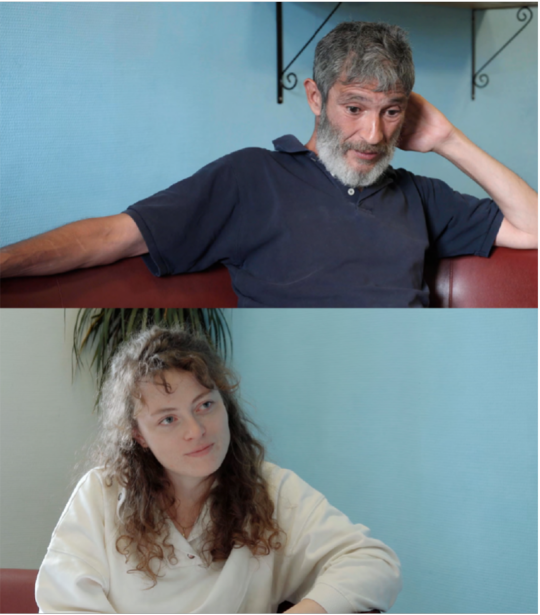
What I really liked about “Averroès and Rosa Parks” was analyzing the relationship between caregivers and patients. Observing the attitudes of the psychiatrics, the way they approach patients and give them time. Finding the right words, asking the right questions, managing social relations. More than that, the department's approach is to try to make the unit as welcoming a place as possible, so that patients can feel as good as possible. The question of affection was raised at a meeting between caregivers and patients. Several of the patients explained that affection and physical contact like hugs was one of the things they were missing. That despite the kindness and attention that carers may have, the hospital remains a rather cold, transient place, where staff don't necessarily have the time, the opportunity, or the right to respond to what the patient would like. For affection, the question is a complex one: is this the role of caregivers? How respond to a need that the hospital cannot meet?
Please note that my summary is 100 times worse than the film, so you'll have to go and see it before it's no longer in cinemas…
0 notes
Text
WAITING FOR…
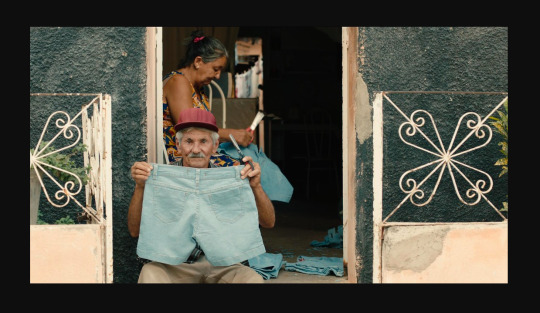
During the industrial era in France, lots of filmmakers showed the social ills of the working class. Bruno Muel's films in particular show how factories exploit workers. At the time, there were lots of similar documentaries, but today's post-industrial France is moving on to new themes. Even so, the working class is still struggling all over the world. Marcelo Gomes' 2019 documentary looks at the living conditions of the people of Toritama in Brazil. In this small, remote town, 20 million pairs of jeans are produced every year in old factories. The workers seem unaware of their situation, even though the conditions in which they work are pretty bad. They say they want freedom, and they want to be able to earn more or less according to their own will and ability. This documentary is all the more relevant because the village has changed a lot between the generation of the director's father and his own. There's no trace of the old village left. The wait for the carnival is a source of desire and motivation that gives meaning to this work and this search for money. It's tough to describe the film because it covers so much ground. I'll try to break it down thematically, looking at the most notable approaches that make this documentary a film with a social, personal and artistic purpose.

I'll focus on the idea of a social portrait of the inhabitants, both in terms of the city's organization and the pursuit of a cyclical temporal objective: the carnival.
youtube
Are we working to live or are we living to work? It's a tough question about the differences in perspective between the audience and the main characters. Marcelo Gomes shows us a dystopian city that's been caught in the grip of capitalism. The city is basically a factory, and people spend their entire lives 24/7 working. It's a society that's totally trapped by modern capitalism. It's incredible how much work is shown throughout the documentary. When Marcelo Gomes interviews people, they don't stop working to talk. The machines never stop, so people keep going and talk to the filmmaker at the same time. People's houses have been turned into jeans factories. The streets are covered in jeans, on the floor, on bags, on cars, and even on people's backs. They live and work from home, which is bad for their health. It's causing back problems, stress, and respiratory issues. They're putting their lives at risk at work. Movies are a great way to show what life can’t be like. It’s a dystopia for the audience and a reality for the people of Toritama. The mechanization of the jean industry has affected many people’s lives and has led to a loss of humanity. The first scenes of the film show how workers are always on the move at work. People produce from the comfort of their homes and from the streets of Toritama.
The people of Toritama are grateful for this job. The good humor makes this film less tragic. It is reminiscent of Charlie Chaplin's Modern Times and burlesque cinema. Comedy in difficult times. Cinema is used to show the notion of the impure. Like Marcelo Gomes, the viewer asks: why are people happy?
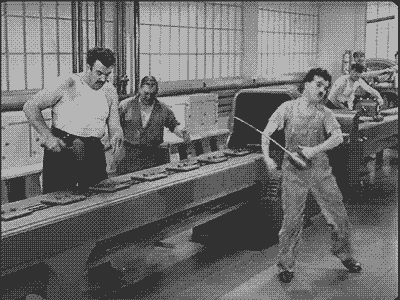
It's chance that creates such an impure documentary. It starts with childhood and the present, which is manipulated by a dominant system. Carnival is a symbol of hope. The cinema immerses us in an existentialist subject. The phrase "there are only 365 days left to wait for the carnival" shows us how these beings are organized. Like in Waiting for Godot, two characters wait for Godot. We don't know what Godot represents, but the characters wait for it. It's an absurd expectation, but it keeps the story going.
Written by Natalia Ceskary
0 notes
Text
Animation shows: The art of drawing society Blind Willow, Sleeping Woman
Cartoons are a colorful medium that creators like to use to depict their vision of our modern world. Therefore this series of articles will be dedicated to animated TV, internet shows and movies of this last year that describe with humor and ruthlessness of our contemporary society. Today: a dreamlike film that takes place in the aftermath of a real tragedy: “Blind Willow, Sleeping Woman”

After writing about how our relationship to others and our behavior can be influenced by an imminent disaster in Carol and The end of the world, we will stay in the same type of analysis with Blind Willow, Sleeping Woman. The story takes place shortly after the 2011 earthquake in Japan and the explosion of the nuclear power plant Fukushima. Komura is bewildered as he observes his wife being taken over by the media, which counts the number of tragic deaths daily. One day, Komura came back from his work at the bank only to find his apartment empty. Kyoko, his wife, only left a note on the floor: “Living with you was like living with a chunk of air”. Kamura decides to take a leave from his work and embarks on a journey to Hokkaido. He carries with him a mysterious box. At the same time, we also follow the story of the “poor Mister Katagiri”. A 40 year old bald and tired man. He works tirelessly without receiving any recognition from his boss and co-workers. While working on a particularly difficult matter, he receives a visit from a giant humanoid frog named Frog. The creature convinces him to help him fight Worm, a giant earthworm that is devouring the bowels of the earth. The danger is imminent since Worm is about to create a massive earthquake in Tokyo. In return, Frog offers to help Katagiri in his work.
youtube
Blind Willow, Sleeping Woman came out in March of 2023 and it is the first feature film directed by Pierre Földes. Experts in cinematographic animation may have recognized the name of Földes from the famous film director Peter Földes. He was a pioneer in computer animation. Pierre Földes is none other than his son. While he has produced some short animated films, his primary occupation is song composition for cinema and television.
youtube
Pierre Földes has conquered the public and the critiques with this first featured film. The movie is well-balanced, with complex and enigmatic French dialogue set in a soft Japanese-like universe. Blind Willow, Sleeping Woman is indeed a movie adaptation of six short novels written by none-other than one of the most published Japanese authors: Haruki Murakami. Murakami’s novels are characterized by magical realism. In his narratives, the character is allowed to experience truly magical intervention in their monotonous daily life. The narrative structures of Murakami's short stories intertwine in Pierre Földes' film, creating a dreamlike aspect due to the crumbling story without beginnings or end.
Poetry is also present thanks to an original animation that blends 3D animations of the characters' faces with 2D pastel backgrounds. The character's movements have been captured in live action which gives an impression of realism. There are also a lot of transparency effects. These two types of animation seem to create two very different universes: a real one that reflects the stiffness of life and the other one which is the realm of dreams.

Pierre Földes gives a more realistic interpretation of Murakami's novel. Indeed, the film deals with many social issues. First, it is a fascinating analysis of the different reactions one can have in the face of a disaster. Kyoko, who suffers from depression, finds herself trapped. The terrible news of the earthquake is feeding her pre-existing anxiety. Alone in the dark, her face is only lit by the TV screen and her mind is filled with the victim count. It ends up getting the better of her. She feels so entrapped, she can’t breathe and eventually she leaves. Komora doesn’t understand his wife’s distress, not that the catastrophe is irrelevant to him, he is just more detached. The real tragedy for him is the departure of his wife. At last, Katagiri seems to experience the panic, fear, and paranoia that can arise after a disaster. He tries to navigate through life as he did before the earthquake and cannot stop imagining that a new catastrophe can occur at any moment.

This movie also makes a general assessment of our behavior of how we treat our planet. Worm is a representation of how nature will fight back against our irresponsible actions and of the terrible consequences of our thoughtlessness. The destruction can only be stopped by a more than ordinary person (Katagiri).
This movie examines many other themes. Komura and Katagiri illustrate how the pressure of hierarchy can depersonalize employees. As Komura experienced the romantic adventure in Hokkaido, we can see an analysis of our sexual behavior and our relationship to our body that deteriorates with age.

Blind Willow, Sleeping Woman is a poetic movie about us, how we cope with tragedy and loneliness. Far from being a nightmare this movie tries to cure our sorrow with dreamlike settings and endearing characters.
Iris Ngoumtcheu
0 notes
Text
What happened to Miss May? The Heartbreak Kid (1972), May’s biggest success (2/4)

Lila (Jeannie Berlin) and Lenny (Charles Grodin), a few hours after their wedding…
“I happen to be a newlywed; I made the big mistake about five days ago.”
The year following A New Leaf’s release, Elaine May pursued her examination of despicable, self-absorbed characters in The Heartbreak Kid (1972). On his honeymoon in Miami Beach, Lenny (the talented Charles Grodin), a sporting goods salesman, gets to spend time with his wife Lila (Jeannie Berlin, May’s daughter) and realizes he does not like her and gets irked by her singing and laughter. He encounters Kelly (Cybill Shepherd), a young college girl from Minnesota, on the beach. Lenny falls instantly attracted to Kelly and pursue her only a few days after his wedding ceremony. However, Kelly’s father, an upper-class WASP, certainly does not agree to give his daughter to Lenny.
The Heartbreak Kid was said to conclude the “Jewish New Wave” that started with The Graduate (1967). Theorized by film historian J. Hoberman, it refers to films released between 1967 and 1973 that explored neurotic Jewish men full of self-hatred and self-absorption in American society. Once more, Elaine May and Mike Nichols’s works as filmmaker cross paths with The Heartbreak Kid’s closing sequence echoing The Graduate’s. Indeed, Dustin Hoffman and Charles Grodin’s characters are portrayed as superficial and disillusioned, unable to break free from their desires.

Time is suspended, we observe the simultaneous reactions of the four characters in a conversation painful to watch as Lenny exposes his intentions to Kelly's father (Eddie Albert)
The Heartbreak Kid is the only movie May did not write herself. This time, she adapted a screenplay written by Neil Simon, an acclaimed but rigid playwright. For each scene, she shot one meticulously respecting Simon’s work and another where she encouraged her actors to improvise. This is a recurrent method in May’s work: she lets the camera run as she searches for comedy to meet truth. The Heartbreak Kid is her only film that was not troubled by conflicts with the studios. The film cost less than $3 million and grossed around $5.6 million in its first year of exploitation. The Heartbreak Kid was May’s most acclaimed and successful theater release.

Charles Grodin, Jeannie Berlin and Elaine May on set
Paradoxically, The Heartbreak Kid might be May’s hardest film to find. It has long been out of print and has never been released on DVD or Blu-Ray. When the film was broadcast on Turner Classic Movies in 2015, The New Yorker even issued an article to urge people to turn on their TVs. The reason for this situation is that the film’s rights were bought by pharmaceutical company Bristol-Myers Squibb who said that they were not interested in restoring the movie or making it available and had no plan to sell the rights. Today viewers can find a poor-quality version on YouTube or on Internet Archive. Recently, a fan made an upscaled version of the film for Elaine May lovers to enjoy The Heartbreak Kid in better quality.
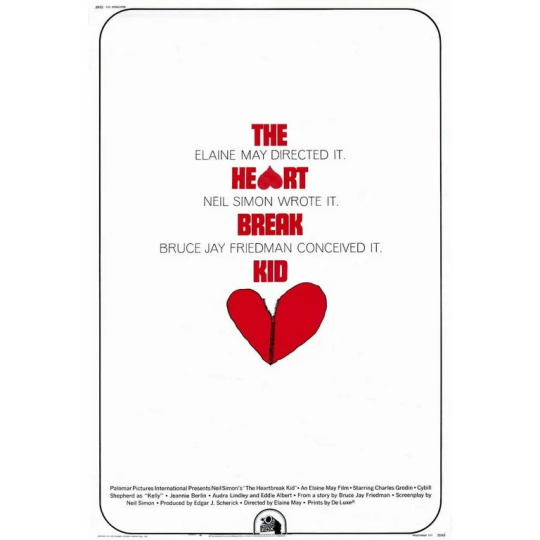
On a personal note, The Heartbreak Kid stuck with me long after watching it for the first time and it might be my favorite from May – although it is a difficult question to be asked. It urgently needs to be rediscovered, to be shown. May finds humanity in Lenny and his cruelty. She does not mock Lila and finds empathy for her – which the 2007 remake by the Farrelly Brothers does not succeed in. May’s genius shines in the observations of egoism and hypocrisy in dark, satirical comedies.
LisaMiaud
0 notes
Text
THE AUSTRALIAN NEW WAVE 2/4 : LONG WEEKEND (1978) DIRECTED BY COLIN EGGLESTON.
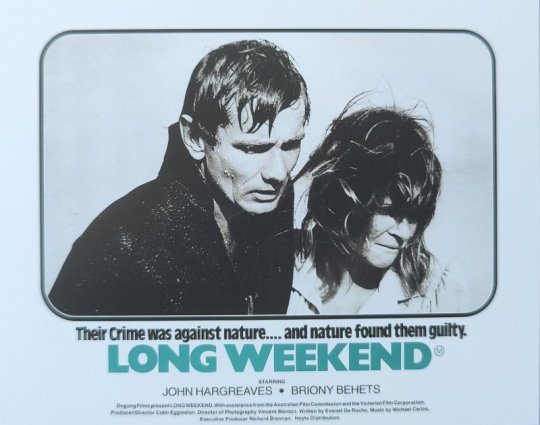
This is the second article of a series dedicated to the Australian new wave films of the 1970s. We are going to deal with a long invisible and relatively unknown movie entitled Long Weekend which was released in Australia in 1978. This movie may belong to what is commonly called « ozploitation », often considered a smaller wave within the new wave, covering a wide range of genres from sexploitation, biker films, horror and even martial arts. The creation in 1971 of a system for classifying films by age, with the inclusion of an R category for those forbidden to minors, gave filmmakers the opportunity to tackle all subjects without restraint. Young Directors have also explored Australia's abundant and wild nature, particularly in the Outback (an inland and vast area remote from large centres of population).

Long Weekend follows a city couple in crisis (on the verge of divorce), Peter and Marcia, who decide to go camping in an isolated area, near a large beach. Their hope is that this little trip will pick up the pieces. However, things don't go according to plan. Despite the calm and beauty of the surroundings, tensions persist, while the wilderness camping turns out to be less pleasant than expected, not helped either by the city dwellers' lack of respect for nature… Peter hits a kangaroo on the road by mistake, knocks down a tree for no reason at all, and kills a marine mammal… As a consequence, nature takes its revenge and becomes increasingly hostile. In the first place, the couple hears terrifying animal cries. Then, a menacing shadow looms over Peter as he goes for a swim in the creek. Next, the film becomes more violent : an attack by a female eagle after the couple unwittingly stole an egg from its nest… Eventually bugs, spiders, snakes and other forest animals make their presence known. At the same time, we understand gradually the sources of tension in the couple: Marcia has just undergone an abortion and there is sexual frustration between them.

There are no spectacular terror effects nor much dialogue. It is rather a psychological horror film: the terror comes in fact from the characters themselves. Eggleston plays with ambiguity. The menacing nature can be viewed as a reflection of their dissolving couple. The film also has a clear ecological dimension: like Peter Weir's The Last Wave, it’s an ecological apocalypse.

The director Colin Eggleston described his film as a cross between Godard's Weekend and Hitchcock's The Birds. The film won an award at the 1979 Avoriaz International Fantastic Film Festival. Director Colin Eggleston is most famous for Long Weekend and retired from cinema at the end of the 1980s. When the film was released in France in 1980, a French critic of Le Canard enchaîné concluded his review in an ironic way : « Environmentalists should take a trip to Australia: nature is atrocious there ».

Romain Dupeyras
0 notes
Text
Auteurizing the amateurs (2/4): Democracy in Green Valley
In the last article, I tried to demonstrate that amateurs can be studied as authors in their own right. They can deal with their own recurring themes, exploit personal stylistic choices, and create a coherent work. Today we will consider how amateur films can play a particular political role. The movie theatre can become an agora, a place for debate. As the French senator Jean-Michel Arnaud put it in a conference about the vital importance of the cinema: “Rare are the places where civil disobedience, democratic opposition, public debate can happen so freely and healthily.” This characteristic of the cinema is epitomised in Peter Weir’s film Whatever Happened to Green Valley (1974).
Up until then, Peter Weir had mostly directed documentary shorts and some fiction. Whatever Happened to Green Valley came out a year before his breakout film Picnic at Hanging rock, a period drama set in a well-off Australian boarding school, reminiscent of Dead Poets Society. But Whatever Happened to Green Valley is very distinct in tone and atmosphere. It is a documentary about life in Green Valley, a housing commission estate in western Sydney. The neighbourhood is maligned by the media, with alarming television reports highlighting the poverty of Green Valley and blaming juvenile delinquency on single mothers and rampant alcoholism. The film is meant to respond to those claims.

An example of the articles written about Green Valley
“But why dedicate an article to Peter Weir, a renowned and most definitely professional film-maker, in a column meant to uplift amateur cinema?” You may ask. Well, Peter Weir’s name is on the poster, but the film is centred on segments directed by half a dozen of Green Valley inhabitants. The film is set in a community center that works both as a movie theatre and as a public forum in this occasion. Peter Weir moderates the discussions.
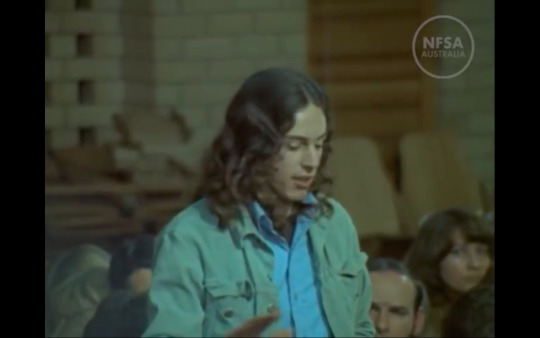
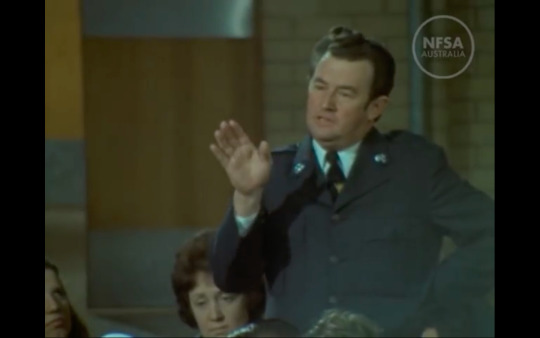
Inhabitants of Green Valley debating at the end of the screening
After the screening, a debate starts on how to make Green Valley better to live in. It leads to practical town planning debates: how can they attract more shops? How to keep teenagers busy? They need more jobs, more places to meet, more cultural activities. The opinions differ, it is a real exercise in local politics. Peter Weir managed to create a democratic space, and to step aside and let the people involved speak.
youtube
0 notes
Text
Text-screen relationships 2/4 - Hiroshima mon amour, the case of confluence
I'm interested in the relationship, in a broad sense, between text and image. In this case, I'm looking at the case of a direct collaboration between an author and a filmmaker. Marguerite Duras wrote the screenplay for Hiroshima mon amour and Alain Resnais directed the feature film of the same name.
While Alain Resnais's Hiroshima mon amour (1959) profoundly changed the history of cinema through the invention of new cinematographic figures (such as montage based on poetic correspondences and long tracking shots crossing both space and time), its novelty was also largely due to its screenplay, written by Marguerite Duras and published separately as an autonomous work by Gallimard in 1960.
It was in 1958, after the success of Nuit et brouillard (1956), that the company Argos approached Alain Resnais with the idea of making a feature film about the Hiroshima atomic bomb. Wishing to avoid a strictly documentary style of writing, the director wanted to make a film with a more intimate tone, emotional, and he thought of entrusting the screenplay to a woman of letters. Françoise Sagan was approached first, then Simone de Beauvoir. Enthused by his reading of Moderato Cantabile, Resnais finally turned to Marguerite Duras. From then on, Duras and Resnais set to work on a screenplay that would be made up of "plays on the discrepancies between the images and the soundtrack, fractures in the linear unfolding of the story, a predilection for silence". Two and a half months later, Hiroshima mon amour was born, a film whose radicalism, largely due to Durassian writing, prefigured the aesthetic revolution of the New Wave.

Alain Resnais at the Cannes Festival in 1980.

Marguerite Duras at home, 1955.
She is a French actress who came to Hiroshima to make a film about peace in 1957. He is a Japanese engineer whose family was decimated by the atomic explosion. They meet and have a brief love affair. Each of them recalls his painful past, linked to the war, and they find themselves united by history. She remembers her youthful love with a German soldier and seems both to relive it and to lose it again with the Japanese. The two protagonists have no first names other than those they give each other at the end of the story, "Hiroshima" and "Nevers": "She: Hi-ro-shi-ma, that's your name / He: [...] Your name is Nevers. Ne-vers-en-Fran-ce. Meeting after the disaster, they have to "rebuild themselves on its ruins", Duras's text confronting their individual history with the collective history - the individual mourning with the collective mourning: "I have confronted the enormous number of Hiroshima deaths with the story of the death of a single love invented by me". And the whole point of the story lies in a paradoxical formula: it's a question of "giving into oblivion" so that memory can be inscribed in the minds and bodies of the lovers.
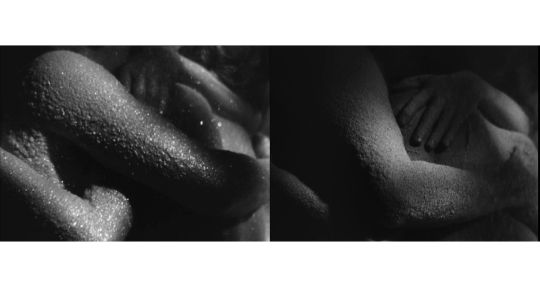
Shots from the movie
Forgetting and memory are recurring themes in Duras's work, whether she is examining the denial of an actress's memories in the twilight of her life in Savannah Bay (1982) or the need to bear witness to the past in La Douleur (1985). With Hiroshima mon amour, whose oxymoronic title underlines its ambition, the power of Durrassian paradoxes comes to the fore in the constant intertwining of present and past, memory and oblivion, love and death, all inextricably linked by the very words: "You kill me. You do me good", the young Frenchwoman keeps repeating to her Japanese lover. And it is perhaps above all this that underpins the collaboration with Resnais, who is also known to be attached to these same themes. In his short films, particularly Guernica (1950), Nuit et Brouillard (1956) and Toute la mémoire du monde (1956), Alain Resnais was already exploring the themes that would run through his future work: the intertwining of individual and collective memories, the haunting of a past that is constantly and fundamentally intertwined with the present, and the need to rebuild, to film and to love in the ruined and spectral post-disaster world.
The collaboration between the writer and the filmmaker is therefore one of back and forth and confluence: Duras draws inspiration from Resnais's direction to create a temporality in which past and present, present and virtual, are constantly intertwined; Resnais, for his part, deploys his direction based on Duras's very own phrase: Hiroshima mon amour is based on rhyme, repetition and the return of the same. The characters repeat the same phrases and words over and over again. Last but not least, it was Duras's phrase that gave rise to Hiroshima's distinctive dollies, since Resnais, who was scouting out locations in Hiroshima at the time, took care to have the writer record all the film's dialogue on cassette, Duras's voice enabling him to calculate all his dollies with precision.

Alain Resnais on the set of Hiroshima mon amour, 1958.
Resnais, better than anyone else, knew how to put Duras's phrase into images, and no one better than Duras knew how to write a screenplay that echoed Resnais's questions.
And both tell us that, faced with the guilt of "having forgotten so much love", faced with the irremediable nature of loss, Hiroshima mon amour proposes a different relationship to time, a different way of remembering, where haunting, which makes remembering and forgetting inseparable, replaces commemoration and constitutes the very condition of a living present. If it is possible and necessary to live and love after the Second World War, after Hiroshima and Nagasaki, after the Shoah, it can only be done in the midst of shadows and ghosts, as if on borrowed time.
Anouck Morin
0 notes
Text
Exploring the Cinematic Universe of Sophia Coppola with her new book: Sophia Coppola Archive 1999-2023

Today I've chosen to discuss Sophia Coppola's cinematic universe thanks to her new book, which offers a new access, and a more intimate view of the making of her films.
In the realm of cinema, few names evoke as much fascination and admiration as that of Sophia Coppola. Renowned for her distinctive style and poignant storytelling, Coppola has carved a niche for herself in the world of filmmaking. Her works, from Virgin Suicides in 1999 to the visually stunning Priscilla released last January have captivated audiences and critics alike, earning her numerous accolades and a dedicated following. Now, with the release of Sophia Coppola Archive in 2023, cinephiles have been granted a rare glimpse into the creative process of this visionary director.
Published as a comprehensive collection of Coppola's personal notebooks, sketches, and behind-the-scenes photographs, Sophia Coppola Archive offers an intimate look at the evolution of her films. It's not merely a book but a portal into the inner workings of one of cinema's most enigmatic minds. As readers, we turn the pages, and are transported into Coppola's world, where every scribble and doodle serves as a testament to her artistic vision.
One of the most striking aspects of the archive is its raw authenticity. It seems to me that unlike polished behind-the-scenes documentaries, which often present a sanitized version of the filmmaking process, Sophia Coppola Archive lays bare the challenges and triumphs that accompany the creation of cinematic masterpieces. From initial concept sketches to hastily written notes, every artifact tells a story of its own, reflecting Coppola's relentless pursuit of perfection.

Moreover, the archive provides valuable insights into Coppola's creative influences and thematic preoccupations. Through annotated screenplay pages and mood boards, readers gain a deeper understanding of the motifs that recur throughout her body of work. Whether it's the exploration of loneliness and alienation in "Lost in Translation" or the examination of privilege and excess in "Marie Antoinette," each film is a reflection of Coppola's unique perspective on the human condition.

The images and texts drawn from Coppola's archives are accompanied by a lengthy interview with the film journalist Lynn Hirschberg. In this conversation, Hirschberg delves into the remarkable body of work reflected in the archives, providing further context and analysis. Through their discussion, readers gain additional insight into Coppola's creative process and the thematic underpinnings of her films.
Beyond its significance as a historical document, Sophia Coppola Archive also serves as a source of inspiration for aspiring filmmakers. By showcasing Coppola's creative process in its entirety, from initial conception to final execution, the archive demystifies the art of filmmaking, demonstrating that even the most revered directors grapple with doubt and uncertainty. For budding auteurs, it's a reminder that creativity is not a linear path but a messy, chaotic journey filled with detours and dead ends.
To conclude, Sophia Coppola Archive is a treasure trove for cinephiles and scholars alike, offering a rare glimpse into the mind of one of contemporary cinema's most influential figures. Through its pages, readers are invited to embark on a journey through Coppola's cinematic universe, where beauty and melancholy intertwine.
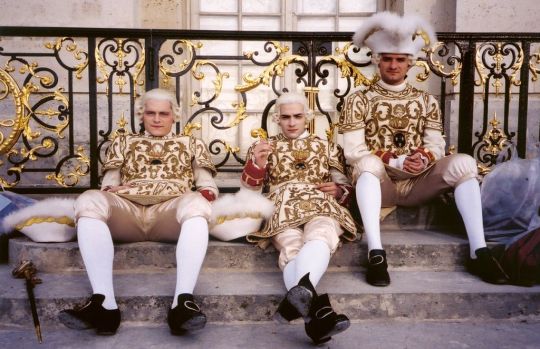
Ninon Boileau
0 notes
Text
Sound’s sensoriality in Bison’s music videos (2/4)
Kerala (DJ Bonobo, 2016)
In 2016, Bison directed the music video for Kerala (DJ Bonobo). Here, the moving image seems totally overwhelmed by the music. The very particular rhythm of the melody is embodied by the image. The music is constructed in canons, or rather in a succession of musical samples repeated throughout the piece, to which a few notes are added at each new bar. The sound seems to stagnate and spin on itself. It's even more accurate to say that it stutters: the piece strives to move forward while being held back by itself. The same is true for the video: a woman is alone in the street. She's anguished but unable to escape, constantly caught up by the people in the shot, and by the frame of the image itself, which holds her captive. In fact, she is always at the center of the shot, even though she is constantly trying to escape. The woman runs, but the frame stops her and repeats every move she makes. She seems to move by stuttering.

Then, image and the sound seem to be in constant tension, trying to catch up with each other, to prevent the other from fleeing out of the frame. As such, Kerala is a relatively difficult video to watch. Firstly, because the repetition of each image can be unpleasant to the eye. But above all, this video can be a source of great frustration.
Indeed, we're used to relatively linear audiovisual works, moving towards a destination, a goal. But Bison invites us to rethink our habits and our way of conceiving and consuming the music video. Moreover, Kerala, as a music video that is fundamentally rhythmic in sound, and disruptive for the eye, invites us to conceptualize the music video as a genuine support for music music and the development of its imagination, and not as a necessary framework for the musical piece, which would put the latter in the background. Then, this music video, made up of vibrations and hesitations, is not really watchable, but is more listenable.
And in fact, Kerala has an intense centripetal force: our eye is attracted to the outside of the frame. With this woman trying to flee the city, our gaze tries to escape the frame. The clip encourages us to focus on the music, but it also invites us to look and observe each image in greater detail. Each jolt is an opportunity for a new revelation: the frame reveals new elements, passers-by, trees, buildings. Through repetition, we are locked into the same frame. And while we're used to a wealth of information that we can't always digest in the video, Kerala's density and brevity invite us to see the images again and again. When we carefully observe this music video, the image is filled with details sprinkled everywhere.
While we might think that this would disrupt the listening experience, I actually think that this music video is an invitation to be viewed several times, allowing us to apprehend first the synchronized image and sound, then the image, then the music. Kerala embodies an invitation to consider music videos beyond their brevity and marketability. This singular process of image repetition also allows us to listen to every detail of the music, to hear the subtleties, the slight variations that we wouldn't be aware of without the repetitive, tortured frame of the image. In this way, the synchronization of image and sound can contribute to the revelation of certain sound elements.
0 notes
Text
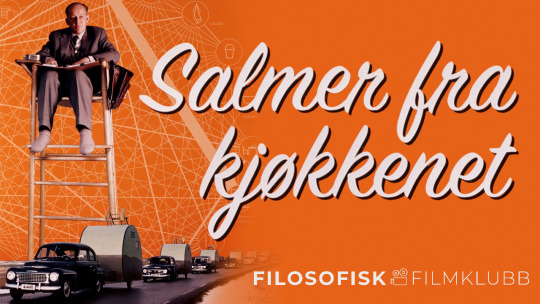
Traditions in transition: cinematic perspectives on the modernization of post-war societies (2/4)
The following article is the second in a four-part series looking at how cinema depicts post-war societies’ transformations, and more precisely the transition from a traditional society to a modern one. You can read each article separately, so there’s no need to worry if you haven’t read the previous one yet. Just know that if you are eager for more, you can find it HERE.
In order to examine our topic from all angles, every article of this series will be dedicated to a separate movie, each originating from a different country. Since context is essential to better understand what lies beneath images, and thus propose an in-depth analysis, I will always start by introducing the director and the significant historical events surrounding the films’releases.

Kitchen Stories, Bent Hamer (2003)
This new installment aims to study how social and environmental impacts of the Norwegian post-war industrial boom are depicted by Bent Hamer in his long feature Kitchen Stories (2003).
Part 2. Kitchen Stories (Salmer fra Kjøkkenet, Bent Hamer, 2003)
For a long time, nordic countries’ economies relied on cultivation, livestock farming, forestry operations and fishing. In fact, the mechanization of agriculture and manufacturing did not begin until the end of World War II. Therefore, although technological advancements and mass production boosted productivity, they simultaneously standardized productions, environments, and social behaviors. It should be noted that some nordic countries were more affected by the industrial boom than others. In that regard, Norway’s industrial revolution occurred later than Sweden’s, primarily due to its politico-economic circumstances. As a result, by 1950 Sweden had achieved a much higher level of industrialization than Norway, which still relied on handcraft and rural activities. It is within this context that Kitchen Stories unfolds.
At its core, Kitchen Stories is a tale of two lonely individuals whose lives intersect in unexpected ways. Isak Bjørvik, a sour Norwegian farmer, and Folke Nilsson, a meticulous Swedish researcher, find themselves thrust into a peculiar social experiment.
youtube
Kitchen Stories's Trailer
In order to improve kitchen efficiency, Swedish researches visit Norway to conduct an observational research on Norwegian unmarried men’s cooking habits. With the promise of getting a horse, Isak begrudgingly agrees to participate in the study undertaken by the Home Research Institute. This strange premise was inspired by a post-war research on Swedish housewives routines.

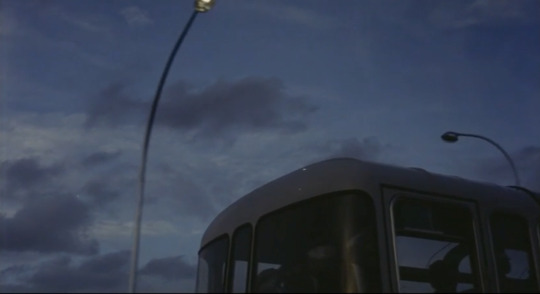

Fig. 1 . Kitchen Stories, Bent Hamer, 2003 / Fig. 2 & 3. Playtime, Jacques Tati, 1967
Like French director Jacques Tati, Bent Hamer uses visual gags as a vehicle for exploring deeper societal themes. The standardization of manufactured items is displayed in the minimalist and uniform aesthetic of the caravans driven by the Swedish observers. As they parade one after another, they contrast sharply with the rural Norwegian landscapes in the background. The framing of certain caravan shots and the extreme geometric uniformity of the diegetic space occasionally resembles Jacques Tati’s depiction of urbanity in Playtime (1967) and My Uncle (1958).


Fig. 1. Playtime, Jacques Tati, 1967 / Fig. 2. My Uncle, Jacques Tati, 1958
Wider shots accentuate this impersonal aspect of the setting, in which we find the same patterns, shapes, structures, and clothing. Moreover, the colors of the urban space are cold and desaturated, with a predominance of black, green, gray and brown.


Kitchen Stories, Bent Hamer, 2003
In the film, Norwegian and Swedish interactions mirror the historical tensions between the two nations. Actually, there are several instances where they make playful jabs at each other. While the Norwegian fought against Nazi Germany during World War II, the Swedish remained “neutral observers”, a stance that echoes throughout the storyline. As exemplified by Folke’s assignment to “observe” his subject without engaging in any interaction. It can also be seen as a metaphor for the scrutiny to which individuals are subjected in the name of progress. Bent Hamer masterfully addresses the dehumanization associated with such endeavors. Later on, Isak spies on Folke through a hole in the ceiling, thus blurring the lines between observer and observed.
Central to the narrative is the notion of communication, or lack thereof. Two people confined to the same space for the duration of the film, yet initially unable to overcome the gap between them due to their pre-constructed perception of each other. It is only through shared moments, such as simple tobacco exchange, that barriers begin to dissolve, paving the way for genuine connection.
Thank you for taking the time to read my article. Your interest is very valuable to me. In my next installment, We’ll be making a stopover in France with Jacques Tati’s My Uncle (1958).
Ruth Sarfati
#Bent Hamer#Kitchen Stories#nordic cinema#norwegian cinema#post war#modernity#industrialization#ruth sarfati
0 notes
Text
Conan the barbarian or how John Millius uses Arnold Schwarzenegger as an anarchist hero.
-Be careful if you hate spoilers -

Arnold Schwarzenegger in the ‘80s is well known to have been a bodybuilder. He started his acting career in 1970 with Hercules in New York but success struck with John Millius’ Conan the barbarian in 1982. Before that he was more a muscle man than an actor who conveyed emotion. The film tells the story of Conan a man that has been enslaved after seeing his mother being beheaded by Thulsa Doom - James Earl Jones - when he was a child. After he was set free, Conan tries everything he can to get revenge. At the first sight, this fantasy tale written by John Millius and Oliver Stone seems classic. It is a revenge story of one man that is going to take down an empire. The music got this epic quality of the 1950s peplum and the fade in between a lot of shots and scenes makes the narration as classic as it can be to represent the time fleeting. Conan’s first action is to take his father’s sword then he will start his revenge. He meets several characters with whom he befriended and he even falls in love with a girl: a blonde. But this tale changed when Thulsa kills Valeria during an attack. The movie’s climax is a battle where Conan uses more his brain than his muscle: there is a long sequence during which Conan and his two friends prepare traps before the battle with a girl, a brunette, they captured. By the end of the movie Millius and Stone transformed the classic revenge story into the story of a men who breaks his alienation and sets other people free.

At the beginning Conan’s work as a slave is to push something heavy in a circle. It is a clear symbol of alienation that started during his childhood until he is free when he is an adult. It is only when he breaks free that he starts his revenge. Therefore, working for Doom made him who he is: this big muscle man that he is. Society creates with inequality what destroys it. Doom represents – as his name make it seems – chaos. He rules over people as a tyrant making women killing themselves for him, using violence to conquer and to lead his kingdom. He is heavily dressed in black and always filmed with a low-angled shot. He is always shown as the ruler over everything and everyone. On the other hand, Conan is almost always shirtless or at least his arms are uncovered. If he kills, he only kills men. If Conan uses violence, it is because he has been attacked. When Thulsa kills Valeria, the blonde with whom Conan is in love, who is free and smart is the moment when Conan has captured the brunette called the princess. The classical story is reverse. The female characters are not just objects for the hero. Moreover, Millius and Stone transformed the hair cliche to show that Conan does not love Valeria because she is pretty. He falls in love with her because she is a better strategist than him. Valeria seems smarter than Conan and his friend. The princess is alienated by Thulsa but at the end of the movie she is no longer a princess. After Conan killed Thulsa with three sword strokes as the three powers – justice, religion and government – the princess goes to his feet and Conan waits for her to stand up and he goes down the stairs to be at the same hight. Conan sees the woman as his equal and not an inferior like Thulsa. Conan the barbarian is the story of two kinds of masculinity fighting against one another. The first one, represented by Doom, is destructive and fueled inequality between men and women and between men and men. Conan represents another kind of masculinity. He stands for equality between sexes, races. Conan is an anarchist hero because he sets people free by destroying the power to makes people rise up by themselves. According to the movie the real chaos is government control and real freedom is to be able to fight for yourself with knowledge and not only with muscle. This is why casting Schwarzenegger is a brilliant idea. His overly ripped body and way to big arms critiques the violence that Thulsa does. Conan does not need those muscles Conan is a new Prometheus as it is quoted during a sequence where Conan is attached to a tree and a bird tries to eat his liver. But Conan’s fire is knowledge and equality. That is why he is an anarchist. He sets on fire power to live in a more equal world because people know and if they do not know, they will learn.

To conclude it is quite funny to watch Conan in 2024 considering Schwarzenegger has become during the 2000s Californian state governor which shows that he was an actor getting into the mind of the filmmaker he worked with. Millius was an anarchist then Shwarzenegger played the anarchist.
Pierre Borowczak
0 notes
Text
Auteurizing the amateurs (1/4): Pierre de Montvallon
Amateur films are presented most of the time as testimonial footage. They are being used more and more in professional documentaries as illustrative footage with a vintage look. Super 8 sells, and is gaining visibility. The films that were once forgotten in caves or attics now are seeing the light of day, and even the light of the silver screen.
But I think there is more in amateur cinema than simply ordinary people documenting their lives. Sure, home movies contain mostly images of smiling children and seaside vacations, and are technically limited: often no sound, shaky shots, poor editing skills. Nevertheless, they shouldn't hinder our ability to take these images seriously. Like any film-makers, amateurs make meaningful visual and sonic choices.
Their limited equipment and the conventions of the genre can limit the expressive qualities of the films. You can characterize amateur footage through certain conventions, such as still frames with family picture compositions: for a few seconds a family looking straight into the lens (minus the person behind the camera). Despite the general awkwardness of this shot, it is a staple of the home movie canon.
The technical inadequacies of the cinematographers are very touching. A glimpse of a thumb in a graduation ceremony video or a flash of light when the camera is switched on by mistake are endearing details. But there are real gems hidden in amateur film archives that shine by themselves. Filmmakers that go further than the stereotypical home movie. Some of them even directed fiction. Today, let’s talk about eccentric nobleman turned amateur filmmaker Pierre de Montvallon.

Pierre de Montvallon, better known as PIEM, is an amateur filmmaker from rural France. He went to art school, and drew political cartoons in French newspapers such as Le Figaro or La Croix. He started out by filming his wife and children. His charming home movies and vacation films showcase his framing abilities, with impactful shots. He uses 16 mm color film.

From Cap Nord été 64
But his fiction shorts are what separates him from other amateur filmmakers. He is recognised by his peers, winning amateur filmmaker awards such as the grand prize of the French amateur filmmakers club congress. We could study his filmography as an author. First of all he has clear inspirations. He admires Pierre Etaix and Jacques Tati and shares their caustic sense of humor. Like them, he enjoys slapstick and clowns, underlined by his sense of composition acquired from drawing cartoons. He can even be quite macabre, with the character of an indecisive suicidal in his short film Sursum Corda. Like any author, he has recurring themes. He dwells on religion and faith, for instance in Fibre Religieuse where a group of mobsters abruptly decide to repent.
His films are deeply personal. It peaks in Cinémalgie, where he confesses his frustrations with his own clumsiness as a director. This absurd metafilm underlines the defects of amateur filmmaking, like bad image/sound synchronization or blurry images, thus transcending them. If you can, please give it a chance, and enter Piem’s world.
0 notes
Text

A subjective collection of film score composers (2/4): Wendy Carlos, an electronic music pioneer in cinema
Born Walter, Carlos was early in her life attracted to music and above all to crafting objects such as computers and other electronic devices. She studied physics and music at the universities of Brown and Columbia. Afterwards, she assisted Leonard Bernstein in 1965 and met Robert Moog in 1968, with whom she worked on the development of the modular synthesizer.
Released this same year, her debut album Switched-On Bach sold more than a million copies and became the second classical album to go platinum. She won several Grammys in 1970. It consisted of pieces of Johann Sebastian Bach played with a Moog synthesizer. This use of synthesizer can announce bands such as Electric Light Orchestra, which combined electronic and classical sounds.
Coming out in 1979, Wendy Carlos is one of the first public personalities to disclose her physical transition and to assume her transgender identity.
She started to composed for cinema with A Clockwork Orange, Anthony Burgess’ novel adaptation from 1971, directed by Stanley Kubrick. The film deals with Alex DeLarge, the leader of a gang who participates in “ultra” violent activities. During one of their operations, Alex is arrested and condemned to fourteen years in prison. Two years later, he volunteers for the experimentation of Ludovico technique, which consists in aversion therapy. The films of sex and violence he is forced to watch are accompanied by an electronic version of the 9th Symphony, by Alex’s favorite composer, Beethoven. His brutal revulsion confirms the effectiveness of the treatment.

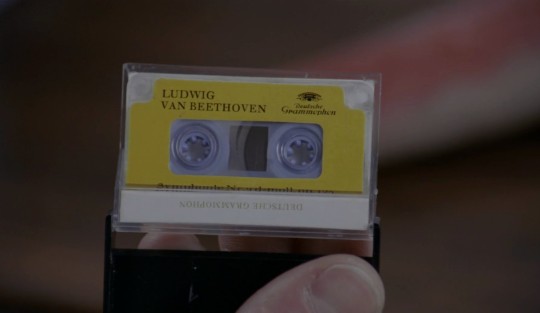
A Clockwork Orange, Stanley Kubrick (1971)
Of course, the well-known opening shot effectively sets the pace, as the camera does a reverse travelling, from the face of the protagonist staring at the audience to the whole extremely bizarre set up. And on the top of all, we experience an electronic version of Henry Purcell’s March for the Funeral of Queen Mary.
This work is fascinating in the sense that it is atemporal. Each piece of music identified as from the past is futurised by the synthesizer. The world depicted in the film is also in this breach. The way violence manifests seems unreal, as well as Alex’s destiny. Still, the whole scenery is really anchor in the known reality of the era. In between anticipation and satire, the film is crossed by Alex passion for classical music. That is why the fact that Alex is disgusted by the electronic version of Beethoven’s 9th Symphony seems to suggest it’s rather grotesque than avant-garde.
After that, she collaborated for a second time with Kubrick on Shining, which is also an adaptation; here from Stephen King’s horrific novel. Nevertheless, on the global soundtrack she proposed to the director, he only kept one score. Indeed, the film opens on Carlos’ memorable reinterpretation of Berlioz’s “Dies Irae” segment of his Fantastical Symphony. Actually, it seems to encapsulate the essence of the film: as the little car progresses through the Going-to-the-Sun Road, Montana, the music accompanied by some curious sounds foreshadows the haunting of the vast Overlook Hotel.
Nonetheless, their artistic disagreement put an end to their work together.


The Shining, Stanley Kubrick (1980)
Her last work was on Tron, directed by Steven Lisberg, produced by Walt Disney Company and released in 1982. Her composition for this one is really interesting: most of the film takes place in the ENCOM mainframe cyberspace, but some scenes are in a realistic setting. Therefore, the orchestration is differentiated, by the addition of the synthesizer for the virtual world. Indeed, she didn’t wanted to propose uniquely electronic music, which led to a collaboration of digital synthesizers with the London Philharmonic Orchestra. Thus, the music tend to calm the rather innovative aspect of the visual, creating the ideal balance for the audience.


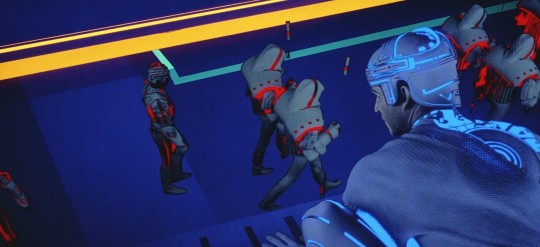

Tron, Steven Lisberg (1982)
Playlist:
2 notes
·
View notes
Text
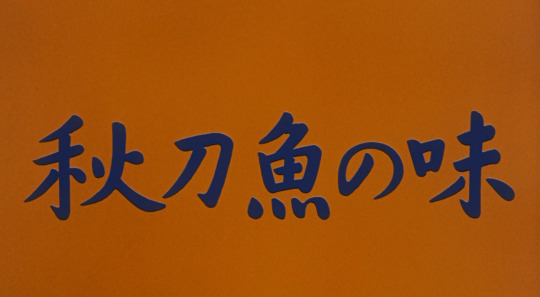
Traditions in transition: cinematic perspectives on the modernization of post-war societies (¼)
The following article is the first in a four-part series looking at how cinema depicts post-war societies’ transformations, and more precisely the transition from a traditional society to a modern one. In order to examine our topic from all angles, every installment of this series will be dedicated to a separate movie, each originating from a different country. Since context is essential to better understand what lies beneath images, and thus propose an in-depth analysis, I will always start by introducing the director and the significant historical events surrounding the films’ releases.
In this inaugural piece, we deal with Yasujirō Ozu’s An Autumn Afternoon (1962) portrayal of westernization and women’s emancipation amidst the Japan societal shifts of the 1960s. Through this work, I wish to highlight the multifaceted societal changes that come with post-war modernization, be it urban and rural spaces experiencing deep transformations due to industrialization, or the evolution of social norms and behaviors.
Part 1. An Autumn Afternoon (秋刀魚の味 The taste of Sanma, Yasujirō Ozu, 1962): westernization of Japanese everyday life and Women’s emancipation
youtube
An Autumn Afternoon's Original Trailer
Japan was propelled into the modern era because of the “Meiji Restoration”, a political event that took place in 1868 and brought about notable changes in the pre-modern feudal society. Commodore Matthew Perry’s visit in 1853 had a part to play in these transformations by leading the Japanese government to realize their “late-developing” status, thus causing the demise of the long-reigning Tokugawa shogunate and the disintegration of a status-ordered system. Accordingly, the “Meiji Restoration” saw the development of small-scale industries, an explosive growth of urban populations, the rise of commerce and the dissemination of education. Despite adopting Western models in areas like law, economy, politics, science and technology, Japan kept its customs and traditions alive. However, upon the completion of its industrial revolution in 1910, Japanese society went through a stagnating period. In fact, economic and social restructuring, which had become crucial, was still not fully achieved.
35 years later, the Axis defeat led to Japan’s occupation by the Allied Forces. Until the Peace Treaty was concluded in September 1951, The S.C.A.P (Supreme Commander for Allied Powers) imposed several reforms, including the adoption of a new constitution in May of 1947. The principle of popular sovereignty was established, and the patriarchy family system abolished. The focus was now on economic reconstruction.
Please CHECK the following article for further historical information
By the 1960s, Japan had emerged from the devastation of World War II and embarked on a path of economic growth, technological advancements and international integration. This era, known as the “economic miracle”, witnessed significant generational shifts. All of which deeply influenced Yasujirō Ozu’s filmography. Especially as the filmmaker was born in 1903 into a middle-class family and has lived through a good part of these dramatic changes.
Set in post-war Japan, An Autumn Afternoon stars Ozu’s regular Chishū Ryū as Shūhei Hirayama, a middle-aged widower and executive at a factory. Hirayama lives with his grown daughter, Michiko (Shima Iwashita), and younger son, Kazuo (Shinichirō Mikami). His elder son, Kōichi (Keiji Sada) has moved out to live with his wife, Akiko (Mariko Okada), leaving Shūhei to be looked after by Michiko. As was the custom in Japan, in the event of the mother’s death, the daughter looks after the family and the household until she eventually marries. At the same time, women are expected to take on domestic roles and marry at a young age, because “older never marry”. As the story unfolds, Shūhei Hirayama’s colleagues and friends begin to express their concern about Michiko’s unmarried status and urge him to find her a suitable husband. Feeling the weight of societal expectations and his own sense of duty, he resigns himself to arrange a marriage for his daughter and encourage her departure from their home. Although the emphasis on this theme may seem, at first, antiquated and patriarchal, women's desire for emancipation is very much present in the atmosphere. Michiko and Akiko, while accepting the traditional roles that society had accorded them, often express their disapproval of certain male behaviors, by refusing to serve them as expected or by questioning their decisions. Both are not afraid to make their voices heard.

Equinox Flower, Yasujirō Ozu, 1958
Notwithstanding the progress in the early 1960s, Japan remained dependent on Western technology imports for a long time, which were really expensive. This period also sees the transition towards television as a dominant medium of communication and entertainment. Due to this Western mass media exposure (movies, commercials, sport events, etc.), younger generations were greatly influenced by Hollywood and American popular culture. Equinox Flower, directed in 1958 already depicted urban dwellers, soda lovers.
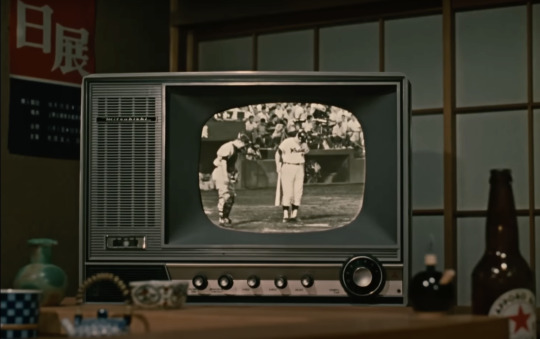


An Autumn Afternoon, Yasujirō Ozu, 1962
In one of the most memorable scenes of An Autumn Afternoon, Shūhei Hirayama and his friends are seated on the floor, around a low table, as was the custom in traditional Japanese restaurants and households. The scene is filmed in Ozu’s regular static low-angle shots, commonly called “tatami” shots. On the opposite side of the restaurant, other clients are having dinner while watching a televised baseball match. Everyone sits around the same Western-style table, but there's no exchange. This juxtaposition beautifully encapsulates the fading traditions and Western growing influence in post-war Japanese society. The setting serves as a microcosm of the societal shifts portrayed throughout the film.
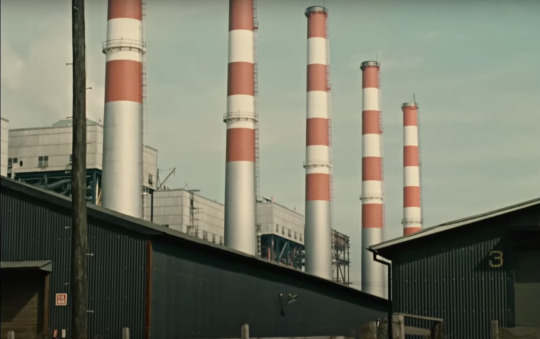


An Autumn Afternoon's opening sequence, Yasujirō Ozu, 1962
I can't conclude this first article without mentioning Ozu’s use of factory shots in the opening sequence. Also known as “pillow shots”, they are devoid of human presence and serve no narrative purpose other than marking time passing and transitions. In this case, they are a nod to the deep spatial transformations caused by industrialization. Factories and industrial areas are very much present in Ozu’s cinema, and are more often than not used as “pillow shots” or a backdrop, as in The Only Son (1936).
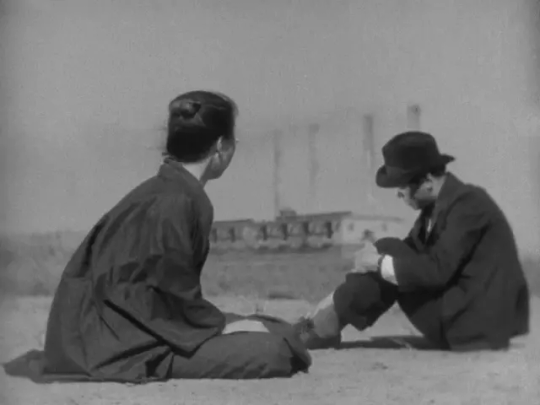

The Only Son, Yasujirō Ozu, 1936
An Autumn Afternoon is Ozu’s last movie before his death in December 1963. The original title of this film means “The taste of Sanma”, where Sanma is a mackerel pike. While never translated correctly, it carries a sense of nostalgia for a vanishing world, its customs and traditions. Like a Proust madeleine, “The taste of Sanma” dredges up a long-lost memory, reflecting on the complexities of post-war Japanese society.
Thank you for joining me on this journey. I genuinely appreciate your interest and support. Please stay tuned so you don't miss my upcoming article. Next time, We’ll be leaving for 1950s Norway through Kitchen Stories (2003). We’ll studying how social and environmental impacts of the Norwegian post-war industrial boom are depicted by movie director Bent Hamer.
Ruth Sarfati
0 notes
Text
THE AUSTRALIAN NEW WAVE ¼ : THE PLUMBER (1979) DIRECTED BY PETER WEIR.

This the first article of a series dedicated to the Australian new wave films of the 1970s. The Plumber is a movie that the renowned Australian director Peter Weir made for television (Channel Nine in Australia) in 1979, before he had a string of successes in the United States (including Dead Poets Society or The Truman Show). It is a very odd movie in Peter Weir’s career. After the two highly ambitious and atmospheric movies that were Picnic at Hanging Rock (a big hit in Australia in 1975) and The Last Wave (1977), Peter Weir returns to a more humble project: it was shot on 16mm over three weeks. The film was one of three movies that the South Australian Film Corporation had contracted to make for Channel Nine. The South Australian Film Corporation was a governmental body whose express aim was to develop a film industry in the 1970s, thus they gave money to a lot of young directors like Peter Weir, Bruce Beresford…

Director Peter Weir at the opening of the Cinémathèque française festival in March 2024
This movie belongs to a genre that we now call “Home invasion”, which displays the intrusion of individuals onto a private property: we can think of Bong Joon-ho’s Parasite (2019) or even Michael Haneke’s Funny Games (1997). Like Bong Joon-ho, Peter Weir is interested in satirising a particular milieu, here it is the academic and intellectual world. The film tells the story of a young couple, living in a campus apartment complex, and while the husband is at work, the wife Meg is repeatedly harassed by an eccentric guy, Max, who claims to be the “plumber”. It could be the starting point of a classical horror movie but it is rather a dark and disturbing comedy, which links it to Peter Weir’s first feature film The Cars That Ate Paris (1974).
The comedians are all complete unknowns, except maybe to the Australian audience. I think that the actor Ivar Kants who plays the intruder is brilliant: he is shameless, arrogant, funny and can appear truly threatening at times. The film can be viewed as a criticism of both condescending attitudes toward lower-class behavior and uneducated manners. Many questions arise during the film. Is the plumber dangerous or sympathetic? Or is Meg paranoid or just afraid of having to deal with a simple craftsman who does not see himself as part of her world? Like in Picnic at Hanging Rock, there are no keys given to the audience to make it easier to understand events.
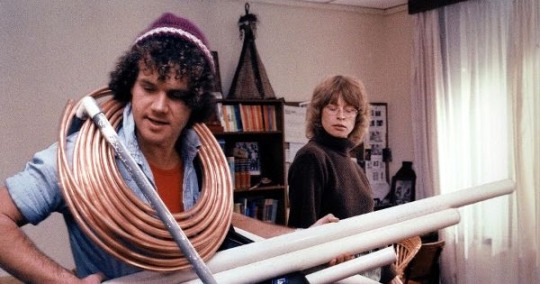
The uninvited guest (Ivar Kants) and the serious student in anthropology (Candy Raymond)
There’s a claustrophobic atmosphere. The movie can be viewed as an infernal circle: the so called « plumber » always find an excuse to come back to the house to disturb Meg. The film can also be reminiscent of Hitchcock’s work with its direct (and maybe too obvious) reference to the shower scene in Psycho.

The annoying "plumber" played by Ivar Kants
The Plumber is a little-known film in Peter Weir’s work, but it is worth discovering. It can be representative of what the directors of the “New Wave” of Australian cinema did in the 1970s: bold and atypical movies.
Romain Dupeyras
0 notes
Text
Unearthing Chimeras

When considering the value of an archive, I am reminded of the importance of understanding the past in order to comprehend the present. To illustrate this feeling, I have chosen the film 'The Chimera' 2023 by Italian filmmaker Alice Rohrwacher. As the movie says, 'Everyone has their own Chimera, something they try to get but never manage to find.'

This quote is particularly relevant to the band of tombarolis, who are robbers of ancient tombs and archaeological wonders. For the thieves, their Chimeras symbolise the redemption of work and the dream of easy wealth. In contrast, Arthur's Chimera is very different; it is Beniamina, his deceased wife. To find his Chimera, Arthur must challenge the invisible, search the earth and find the door to the other world of which the myths speak. This is a voyage between the living and the dead, the visible and the invisible, between people and solitude, each character searching for his chimera.
In an interview with Alice Rohrwacher from Film at Lincoln Center, the filmmaker discusses the inspiration for the film. She begins by talking about her first love, archaeology. For her, archaeology is closely linked to memory. The act of finding ourselves in the past allows us to understand that the present is the result of many layers. There are layers, and whatever the present is, it will eventually pass. This leads Alice to reflect on what she wants to leave behind as an individual.

Rohrwacher's cinema evokes spirituality through the use of 35mm and 16mm film formats, blending the past and present. The artist seeks to leave beautiful things behind. As archaeology tells us a lot about things that have ended and that we will end. Making a film is like leaving a trace. Alice Rohrwacher once said, 'When you make a movie, you put together so many different things, and at least in your intentions, you want that to be good.'
Alice grew up in the same Tuscan region as the film. She describes it as an area where the dead give life, and where a 2500-year-old civilization thrives. The tombs in the area are full of wonderful objects that can be found anywhere, and with a little digging, one can find fragments of things that were built by someone. In that village, there is a notorious object thief who used to share his adventures at the local cafe or bar. As a child, Alice was deeply impressed by this thief and listened to him carefully.
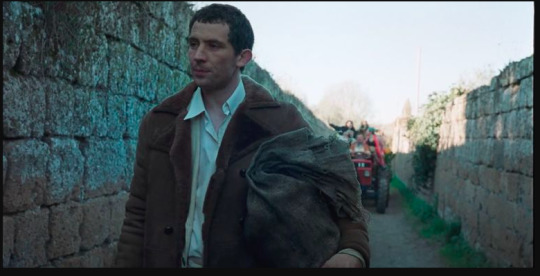
It is important to consider that these objects may belong to someone. As time passed, she found herself wondering: 'If you can escape the law of the day, the law of paper, the law of authority, but what about the law of the night?, And the law of souls? because these objects belong to someone. The film's intention is to explore this fear. Then there is the notion that an entire civilization would construct beautiful objects and then hide them, make them invisible, and that is how the idea for Alice was born: to make a film about this world in which the visible and the invisible would have the same value.
Ceskary Avitia
0 notes